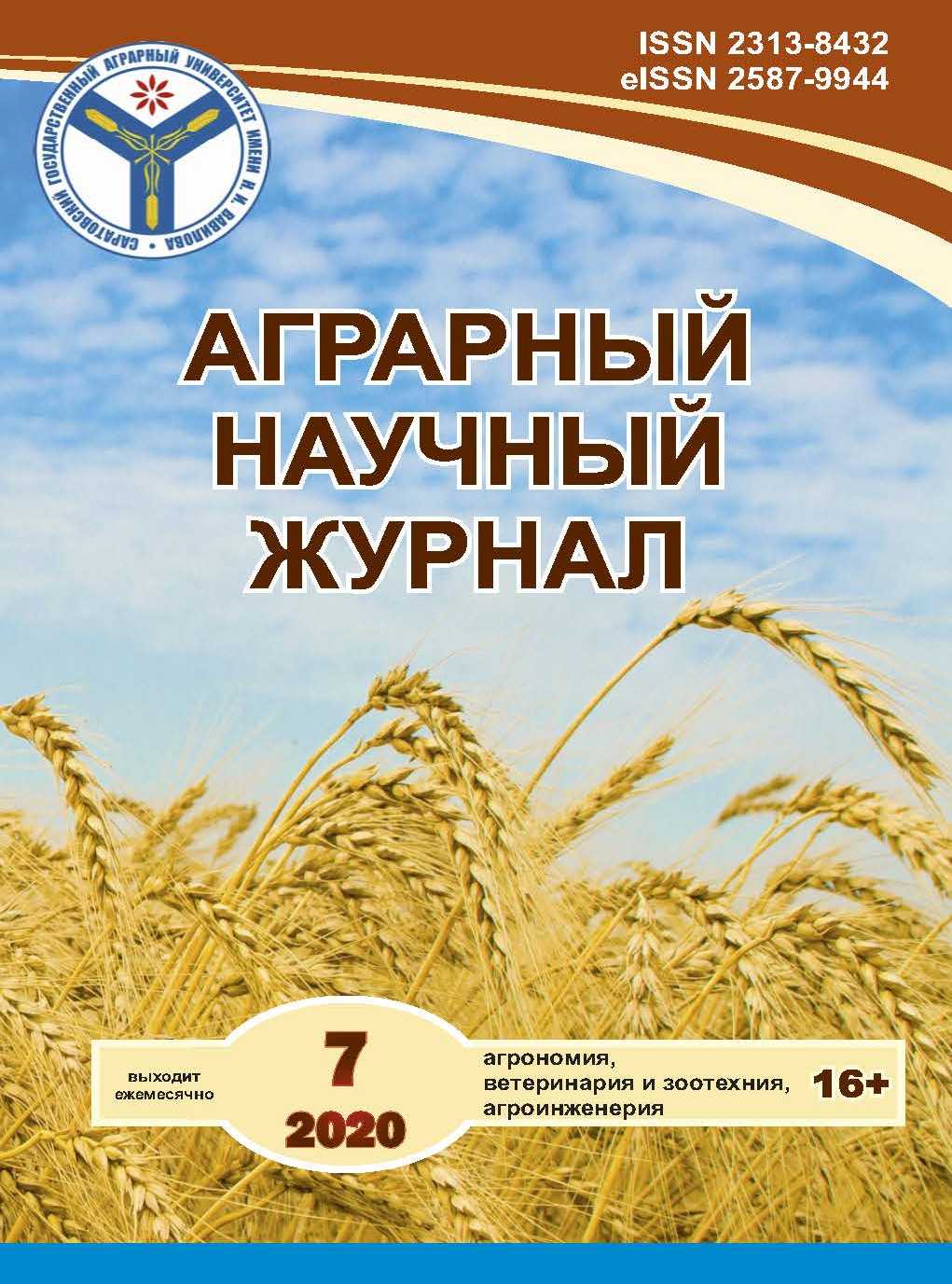Biological features of plum cultivar-rootstock combinations in arid conditions of the Northern Caspian sea
DOI:
https://doi.org/10.28983/asj.y2020i7pp20-25Keywords:
rootstock, growth, crown, biometrics, plum, productivity, varietyAbstract
The results of studies of biological features of growth and fruiting of plum varieties are presented. Found that released at the yield grade the Great blue on dwarf rootstock VVA-1 and Anna Shpet on medium Eureka-99 was characterized by a statistically significant difference in comparison with control Greengage Altana (LSD05 3.5 t/ha). The Kuban early variety exceeded the control yield by 35%, while the Burbank and Great blue varieties on Eureka-99 were at its level in terms of yield. In the third year after planting, almost all varieties of rootstock combinations formed single fruits. It indicates the potential rapidity of these varieties. The size of the fruit stood out varieties Bogatyrskaya and Angelina with a fruit weight of 53.6...52.3 g, with a fruit weight of the control variety Renklod Altana-20.5 g. the Lowest percentage of the bone from the fruit weight (3.3%) was marked in Angelina variety.
Downloads
References
2. Еремин Г.В. Клоновые подвои косточковых культур в интенсивном плодоводстве // Слаборослые клоновые подвои в садоводстве: сб. науч. тр. / МСХА. – Мичуринск, 1997. – С. 135–136.
3. Зволинский В.П., Иваненко Е.Н., Доброскокина Л.А. Сады Прикаспия. – Волгоград, 2011. – 400 с.
4. Зволинский В.П., Иваненко Е.Н., Меншутина Т.В. Эколого-биологические особенности слаборослых подвоев косточковых культур при интродукции в Северный Прикаспий // Известия Нижневолжского агроуниверситетского комплекса: наука и высшее профессиональное образование. – 2014. – № 1. – С. 21–27.
5. Комплексная оценка сортов сливы в условиях интенсивного сада Северного Прикаспия / В.А. Солонкин [и др.] // Теоретические и прикладные проблемы АПК. – 2019. – № 4. – С. 35–39.
6. Косточковые культуры. Выращивание на клоновых подвоях и собственных корнях / Г.В. Еремин [и др.]. – Ростов-н/Д.: Феникс, 2002. – 256 с.
7. Методические указания по определению качества растительной продукции / В.С. Крищенко [и др.]. – М.: ЦИНАО, 1980.– 81с.
8. Методы биохимического исследования растений / А.И.Ермаков [и др.]; 3 е изд., перераб. и доп. – Л.: Агропромиздат. Ленинградское отделение, 1987. – 430 с.








